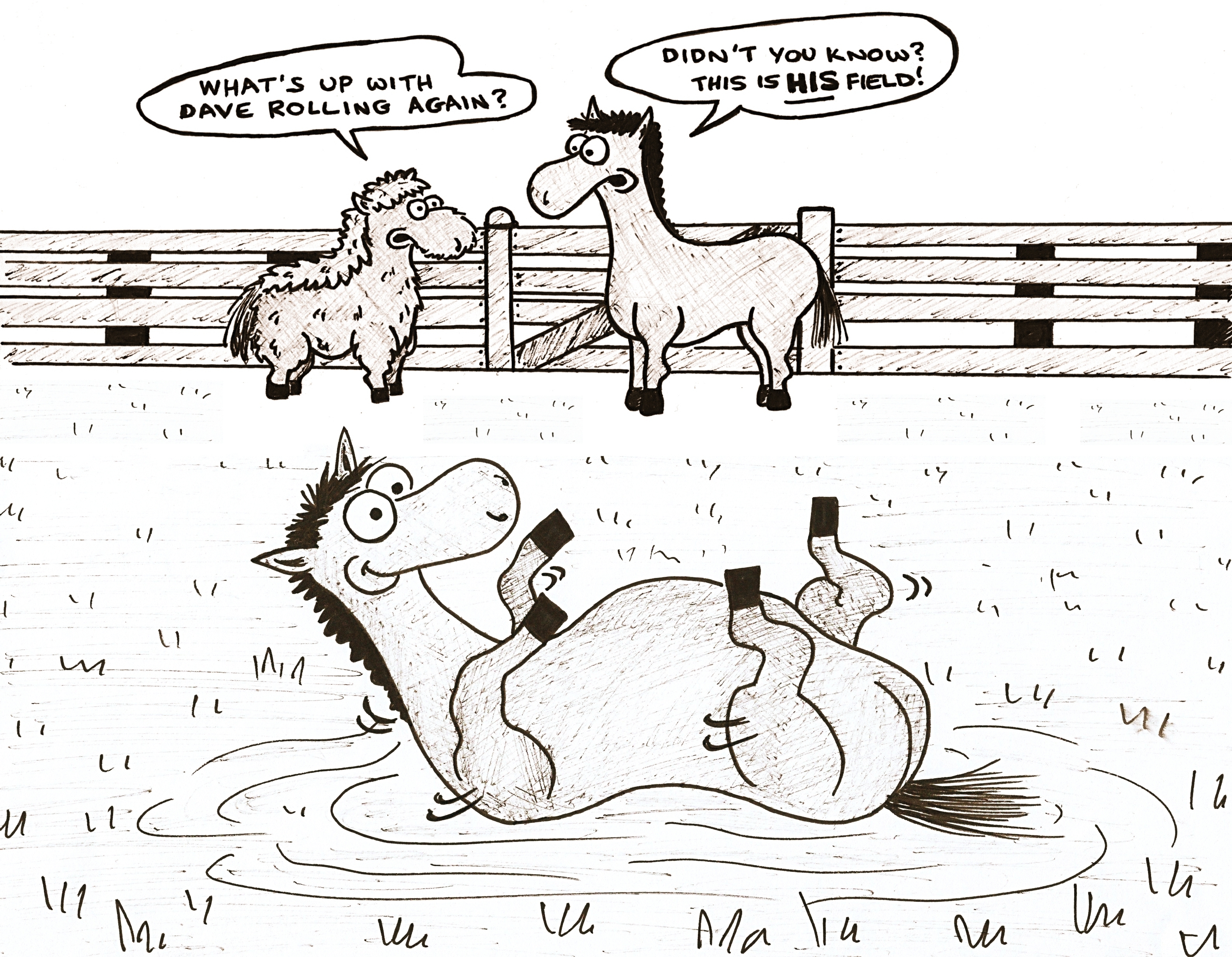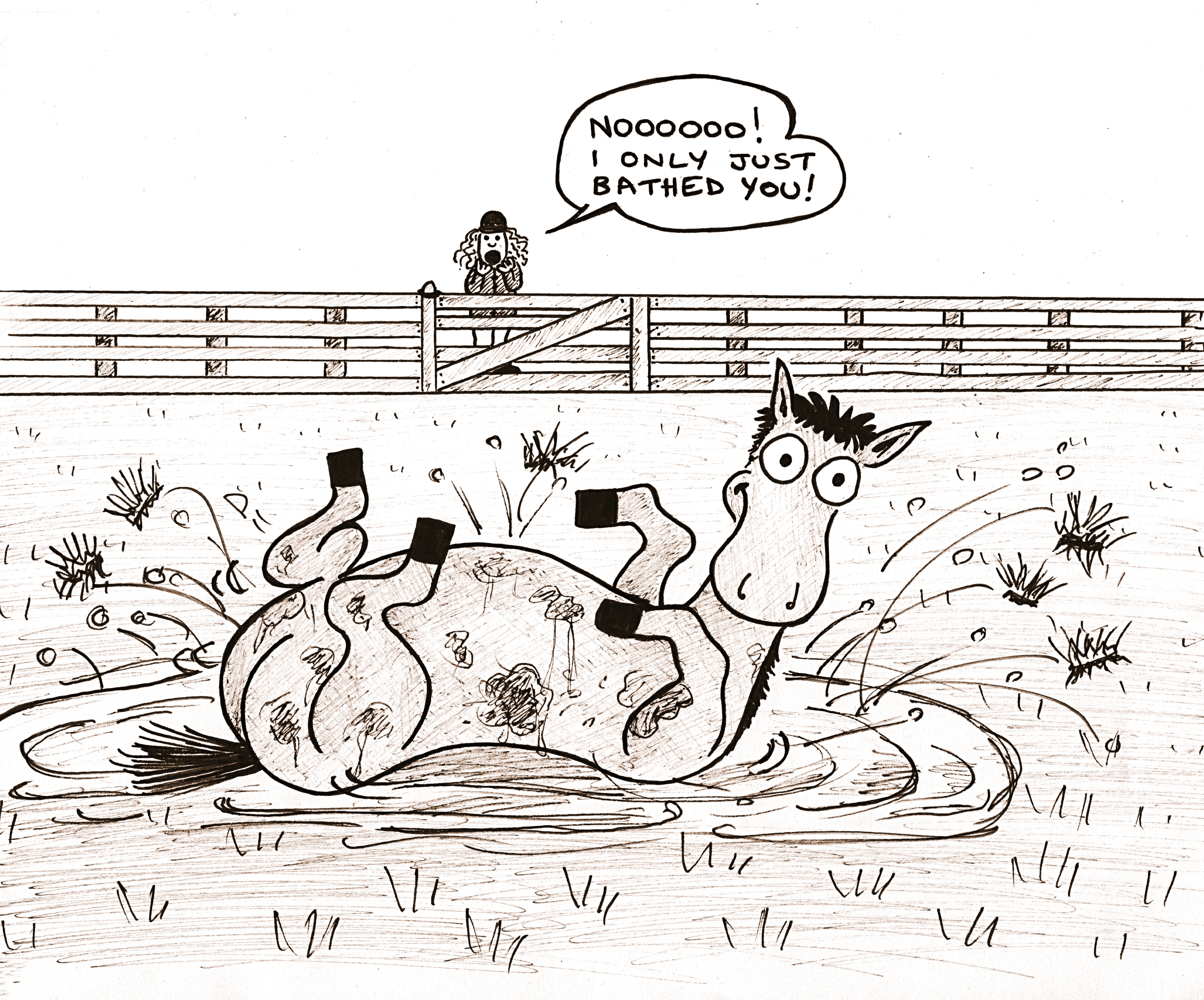So Why do Horses Roll?
As horse lovers and owners we know only too well how our horses relish a good roll, especially in a favourite dusty or muddy spot. They kick their legs up in the air whilst wriggling their whole side and back bodies on the ground, even rolling over joyfully on alternate sides, to reach any area of attention. But what other health benefits can rolling provide our horses?
Horses roll for pleasure when they are relaxed and feel it is safe to do so. Similar to when a person yawns, rolling can be contagious too and you can sometimes see more than one horse roll in sequence. Especially after exercise rolling facilitates a lovely post-workout muscle massage.
As well as for enjoyment, a horse will roll to help with shedding their coat and to maintain their coat and their body temperature. Any irritation caused by drying sweat can be relieved by rolling as the dust or mud has a cooling and drying effect.
The drying benefits of a good roll in dust and mud are evident too after a horse is washed down, although perhaps not so much to the horrified horse owner who has just bathed their horse and turned him out gleaming, to seconds later find him dirt coloured again!
Rolling excessively can be the horse’s way of communicating that he might be over-rugged. Excessive or frantic rolling in the winter can indicate that the horse has become too warm in their rug and they are trying to cool themselves or adjust their internal thermostat. So if your horse is akin to frequently turning himself into a ‘hippo’, it may be worth checking how warm he is in his rug.
Rolling is strongly linked to the social behaviour of horses. An observant owner can use rolling, amongst other signs, to assess their horse’s social status in the herd and perhaps address any behaviour challenge they might be experiencing. A herd will often have a favourite rolling spot. The most socially confident horses in a group usually make their scent marks last. This includes being the last to roll, often in a favourite spot and near access points including gateways in a domestic setting. Interestingly, foreleg striking last and squealing last, as well as getting preferential access to food, water and space (such as the gateway at bringing in time) are also indicators of a ‘socially ambitious’ horse.

If you’re experiencing challenging behaviour with your horse and you notice these things, including rolling last, it couldbe the problem is ‘socially motivated’. Many behaviour problems including difficulty catching, leading, loading, mounting, spooking, napping, rearing and bucking can simply be the horse trying to readdress the ‘status’ of the relationship with their human. They may be trying to take the more ‘socially confident’ role in the partnership, which is actually a natural part of ‘equine etiquette’! They may feel it’s their responsibility to keep everyone safe (which can include usas their herd member!). As horses are highly sociable animals, a lot of the behavioural challenges that owners face are ‘socially’ motivated. Positive and simple handling techniques, which an Equine Behaviour Consultant can recommend, can powerfully improve the horse’s understanding of the relationship, and help to resolve certain behaviour challenges.
It’s well worth mentioning that horses do also roll in response to pain in their gut. ‘Colic’ is a stomach ache which a horse will try to self remedy through the action of rolling as it can help move things around inside such as gas and fluid pockets. It’s a good idea to become familiar with colic signs and learn the differences between rolling for pleasure and rolling because of pain. Here’s a brief summary of signs to look out for in a ‘colicking’ horse:
- ‘uncharacteristic’ frantic or sporadic rolling
- general restlessness and getting up and down
- anxiously looking at their sides (at the pain area)
- a tense ‘heave’ line around their flanks
- patchy or excessive sweating
Colic in horses can be a serious matter and at the first sign of this kind of rolling a vet should be called to assist.
Finally, mud and dust can act as a skin conditioner as well as a natural insect repellent. So, if your horse finds another muddy patch to roll in and you don’t feel like grooming the mud off (for the umpteenth time!) you can rest assured the dirt may actually be helping his skin, especially during these warm summer days when flies are out in force!

